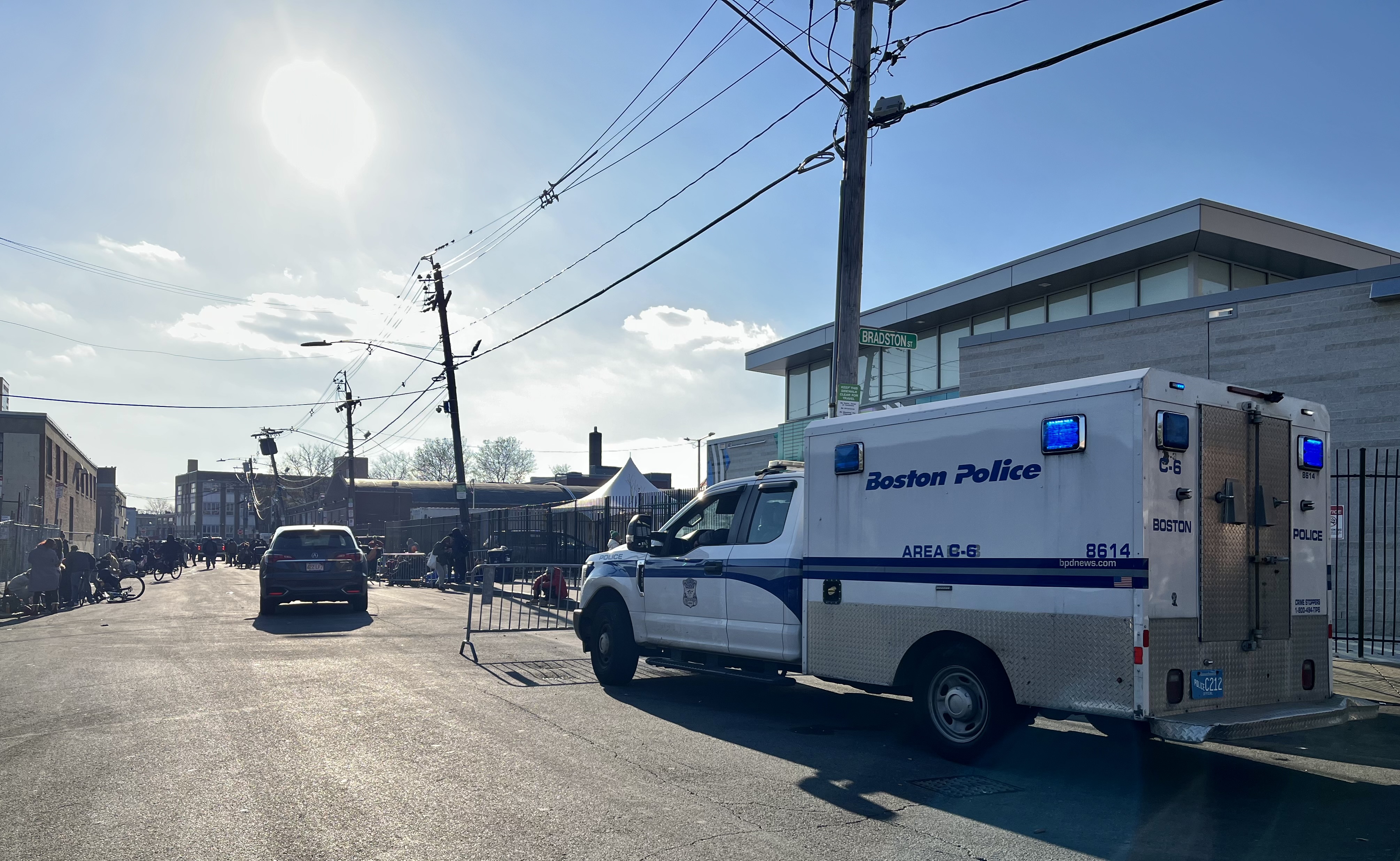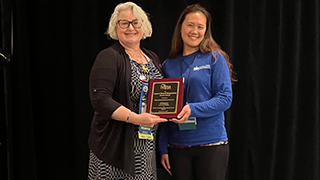Public school enrollment in Mass. on a five year decline as private options see higher demand – WGBH

Report on Post-Pandemic Public School Enrollment Shifts in Massachusetts and Implications for Sustainable Development Goals
Executive Summary
A recent analysis of educational trends in Massachusetts reveals a significant and persistent shift in school enrollment patterns following the 2020 COVID-19 pandemic. Public schools have experienced a notable decline in student numbers, while private school and homeschooling enrollment have surged. These shifts, most pronounced in wealthier districts, raise critical concerns regarding the advancement of Sustainable Development Goal 4 (Quality Education), SDG 10 (Reduced Inequalities), and the stability of public institutions as outlined in SDG 16 (Peace, Justice and Strong Institutions).
Analysis of Enrollment Trends (2020-2024)
Key Statistical Shifts
Data compiled by Boston University researchers indicates a sustained change in educational choices among families in Massachusetts five years after the initial pandemic disruption. The primary findings include:
- A 2% overall decline in public school enrollment, representing a loss of approximately 16,000 students.
- A corresponding 14% increase in private school enrollment.
- A 45% surge in the number of students being homeschooled.
This data suggests that the initial move away from public schools in 2020 was not a temporary reaction but has solidified into a longer-term trend.
Causal Factors and Their Relation to Sustainable Development Goals
Challenges to SDG 4: Quality Education
The enrollment decline appears driven by parental concerns directly related to the core tenets of SDG 4, which advocates for inclusive and equitable quality education. The primary factors identified are:
- Concerns over Academic Rigor: Many parents perceive that public schools, while focused on academic recovery for students who fell behind, are not adequately challenging all students. This points to a gap in providing a universally high-quality education as mandated by SDG 4.
- Behavioral and Social-Emotional Concerns: The pandemic’s impact on students’ social and emotional skills has led to increased behavioral issues in classrooms. Parental concerns about classroom discipline and disruptive environments have prompted a move to alternative schooling options, undermining the goal of a safe and inclusive learning environment for all.
Impact on SDG 10: Reduced Inequalities
The enrollment shifts are not evenly distributed, highlighting a significant challenge to SDG 10. The study notes that the wealthiest 20% of public school districts experienced the most substantial losses. This trend suggests:
- An emerging educational divide where families with greater financial means opt out of the public system.
- A potential for increased socio-economic segregation in schools, which could weaken public schools by reducing the presence of engaged, high-resource families and concentrate students with higher needs in the public system.
- Other factors, such as the lack of affordable housing (a challenge to SDG 11: Sustainable Cities and Communities) and out-of-district placements for students with disabilities, further compound the inequalities within the educational landscape.
Case Study: Brookline Public Schools
The enrollment dynamics in affluent districts like Brookline exemplify the trend. Brookline’s enrollment fell from 7,777 in 2020 to 6,891 in 2021, before recovering slightly to just over 7,000 by 2024. While local forecasts predict a rebound, experts caution that this is contingent on the district’s ability to address the concerns driving families away.
Recommendations for Sustainable and Inclusive Institutions (SDG 16)
Strengthening Public Education Systems
The decline in public school enrollment poses a direct threat to the long-term health and funding of these key public institutions, a core concern of SDG 16. The loss of students and engaged parents who vote to support school funding can weaken the entire system. To ensure the sustainability and inclusivity of public education, the following actions are recommended:
- Enhance Parental Engagement: Public schools must proactively engage with parents to understand their concerns and expectations regarding curriculum, school culture, and student support.
- Ensure Equitable and Quality Education for All: Districts must demonstrate a clear commitment to meeting the needs of every student, providing both academic support for those who need it and rigorous challenges for advanced learners, in direct alignment with SDG 4.
- Address Classroom Environment: Schools must implement strategies to improve the social, emotional, and behavioral well-being of students to foster a safe, orderly, and inclusive learning environment.
- Promote Institutional Resilience: By actively addressing parental demands and demonstrating value, public schools can work to re-attract families, thereby securing their funding, community support, and role as strong, inclusive institutions.
1. Which SDGs are addressed or connected to the issues highlighted in the article?
SDG 4: Quality Education
- The article’s central theme is the shift in school enrollment in Massachusetts, directly related to the provision and perception of quality education. It discusses declining public school enrollment, rising private school and homeschooling numbers, and the reasons behind these shifts, such as concerns over “academic rigor” and “students’ learning” setbacks. This directly engages with the goal of ensuring inclusive and equitable quality education.
SDG 10: Reduced Inequalities
- The article explicitly points out that the educational shifts are not uniform across different economic groups. It states that “the wealthiest 20% of public school districts lost the most students,” indicating that wealthier families have greater flexibility to opt out of the public system. This highlights an inequality in access to educational choices based on economic status, which can exacerbate broader societal inequalities. The potential impact on public school funding further connects to this goal.
2. What specific targets under those SDGs can be identified based on the article’s content?
SDG 4: Quality Education
-
Target 4.1: By 2030, ensure that all girls and boys complete free, equitable and quality primary and secondary education.
- The article connects to this target by highlighting parental concerns about the quality of public education post-pandemic. The text notes that parents are worried about “academic rigor” and that schools are focused on remediation, meaning “students who don’t need that support but need more of a challenge are not finding that.” The exodus of 16,000 students from public schools suggests a perception that the system is not delivering on the “quality” aspect of this target for all students.
-
Target 4.5: By 2030, eliminate gender disparities in education and ensure equal access to all levels of education and vocational training for the vulnerable, including persons with disabilities, indigenous peoples and children in vulnerable situations.
- This target is relevant through the mention of students with disabilities. The article quotes a Brookline official stating, “If a student has a disability and we don’t have a program that’s serving them well here in Brookline, sometimes they get out-of-district placement.” This points to challenges in providing equal access and appropriate services for vulnerable students within their local public school district.
SDG 10: Reduced Inequalities
-
Target 10.3: Ensure equal opportunity and reduce inequalities of outcome, including by eliminating discriminatory laws, policies and practices and promoting appropriate legislation, policies and action in this regard.
- The article’s finding that “the wealthiest 20% of public school districts lost the most students” directly relates to this target. It shows an inequality of outcome where families’ economic status determines their ability to choose alternative schooling options like private school. This trend can lead to a two-tiered education system, reducing equal opportunity for students who remain in potentially under-resourced public schools.
3. Are there any indicators mentioned or implied in the article that can be used to measure progress towards the identified targets?
Indicators for SDG 4 (Quality Education)
- Public School Enrollment Rate: The article provides a direct indicator of a 2% decline in public school enrollment, equating to a loss of “roughly 16,000 students since 2020.”
- Private School and Homeschooling Enrollment Rates: The article offers specific metrics to track the shift to alternative education: “private school enrollment rose 14%” and “the number of students pursuing [homeschooling] has surged 45% since 2020.”
- Rate of Out-of-District Placements for Students with Disabilities: The statement about students with disabilities being placed “out-of-district” implies that the number or proportion of such placements can be used as an indicator to measure how well a district is serving its vulnerable students (Target 4.5).
Indicators for SDG 10 (Reduced Inequalities)
- Enrollment Data Disaggregated by District Wealth: The article’s key finding that “the wealthiest 20% of public school districts lost the most students” serves as a direct indicator. Tracking enrollment changes based on the economic profile of school districts measures the inequality in educational choices and outcomes (Target 10.3).
4. Create a table with three columns titled ‘SDGs, Targets and Indicators” to present the findings from analyzing the article. In this table, list the Sustainable Development Goals (SDGs), their corresponding targets, and the specific indicators identified in the article.
| SDGs | Targets | Indicators |
|---|---|---|
| SDG 4: Quality Education | Target 4.1: Ensure all children complete free, equitable and quality primary and secondary education. |
|
| SDG 4: Quality Education | Target 4.5: Ensure equal access to all levels of education for the vulnerable, including persons with disabilities. |
|
| SDG 10: Reduced Inequalities | Target 10.3: Ensure equal opportunity and reduce inequalities of outcome. |
|
Source: wgbh.org

What is Your Reaction?
 Like
0
Like
0
 Dislike
0
Dislike
0
 Love
0
Love
0
 Funny
0
Funny
0
 Angry
0
Angry
0
 Sad
0
Sad
0
 Wow
0
Wow
0



























;Resize=805#)



















































